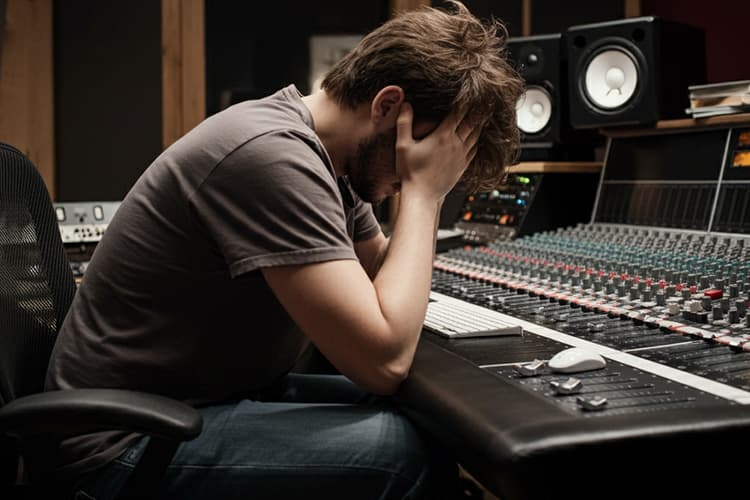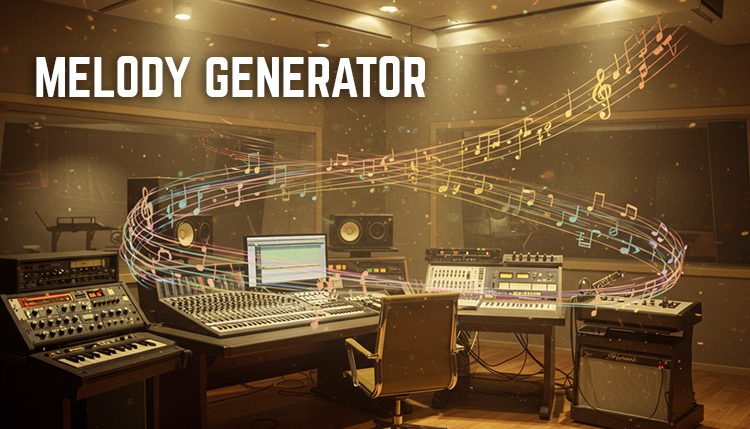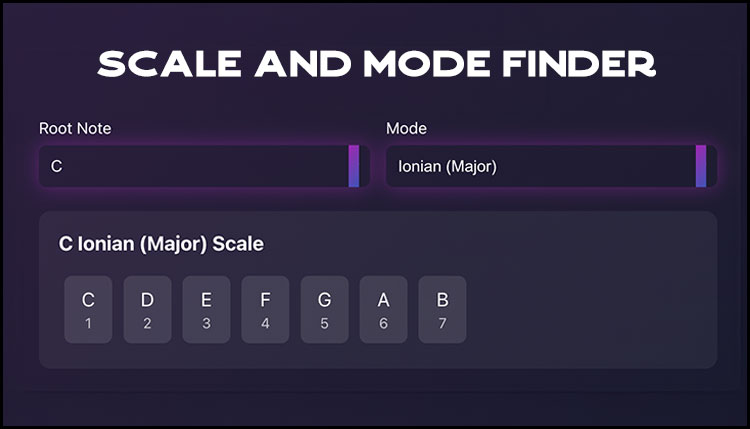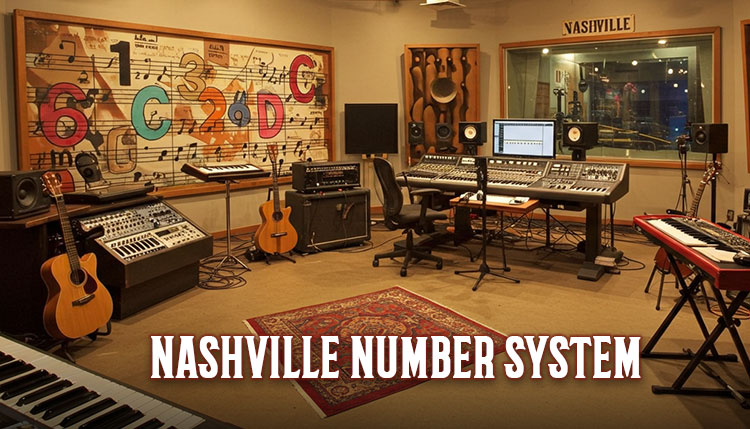Ever wondered how your favorite songs sound so crisp and polished? The secret lies in the mix!
As legendary producer Rick Rubin once said, “The mix is where the magic happens.”
In 2024, with advancing technology and evolving musical trends, mastering the art of mixing has become more crucial than ever.
Did you know that a well-mixed track can increase listener engagement?
Whether you’re a bedroom producer or an aspiring audio engineer, this guide will show you how to mix music so you can elevate your mixing game.
Get ready to transform your demo recordings into radio-ready hits!
Understanding the Basics of Music Mixing
Alright, let’s dive into the world of music mixing! I gotta tell ya, when I first started learning how to produce music, I had no clue what I was doing.
I remember sitting in front of my computer, staring at all those fancy knobs and sliders in my DAW, feeling totally lost.
But over time, I’ve learned a thing or two, and I’m excited to share that with you.
So, What Exactly is Mixing?
Well, it’s like being a chef in a musical kitchen.
You’ve got all these ingredients (tracks) and you’re trying to blend them together to create something delicious for the ears.
It’s way more than just adjusting volume levels, though that’s definitely part of it.
I once made the mistake of thinking mixing and mastering were the same thing. Boy, was I wrong!
Mixing is about getting all the individual elements of a song to play nice together, while mastering is the final polish that makes sure the whole album sounds cohesive.
It’s like the difference between cooking a meal and plating it beautifully.
When it comes to mixing, there are a few key elements you’ve gotta keep in mind:
- Balance: Making sure no instrument is overpowering the others
- EQ: Shaping the frequencies of each sound so they all have their own space
- Panning: Placing sounds in the stereo field
- Compression: Controlling the dynamics of each track
I remember working on this one track where the vocals recordings were totally buried under a wall of guitars.
It took me hours of tweaking before I realized I needed to carve out some space in the midrange with EQ.
That was a real lightbulb moment for me!
Mixing Tools
Now, you might be wondering what tools you need to start mixing.
Honestly, you don’t need a ton of music production equipment or fancy gear to get started.
A decent computer, some good headphones or monitors, and a DAW (Digital Audio Workstation) like Pro Tools or Logic are the basics.
But let me tell ya, it’s not about the tools – it’s how you use ’em.
I’ve heard amazing mixes done on budget setups and terrible ones from million-dollar studios.
Focus on the Basics
One thing I wish someone had told me when I was starting out: don’t get caught up in buying every plugin under the sun.
Focus on learning the music production basics first.
Heck, I spent way too much money on plugins I barely use now.
Start with the stock plugins in your DAW and really learn how to use them. You’d be surprised how far you can get!
As you’re learning, don’t be afraid to experiment.
Some of my best mixing decisions have come from happy accidents.
Like this one time, I accidentally left a delay plugin on my snare track, and it ended up adding this awesome rhythm to the whole song.
Sometimes mistakes lead to magic!
Just remember, mixing is as much an art as it is a science. There’s no one “right” way to do it.
What matters is how it sounds in the end.
And trust me, your ears will get better over time. It’s like a muscle – the more you use it, the stronger it gets.
Setting Up Your Mixing Environment

Let’s talk about setting up your mixing space, ’cause let me tell you, it can make or break your mixes.
I learned this the hard way when I first built my home studio setup.
I was mixing in my bedroom with bare walls and a boomy bass that was driving me crazy.
My mixes sounded great in there, but as soon as I played them anywhere else, they fell apart.
Ugh, talk about frustrating!
Acoustics
First things first, acoustics are super important.
You don’t need to go crazy and build a professional studio, but a little soundproofing and treatment can go a long way.
I started with some basic foam panels on the walls and a couple of bass traps in the corners.
It made a huge difference in how accurately I could hear what was going on in my mixes.
Monitoring
When it comes to monitors and headphones, this is one area where I’d say it’s worth investing a bit if you can.
I remember trying to mix on these cheap computer speakers I had lying around. Big mistake! Everything sounded tinny and harsh.
I finally saved up and got a pair of the best studio monitors, it was like a whole new world opened up.
Suddenly, I could hear all these details I was missing before.
But hey, if you’re on a tight budget, don’t sweat it too much. A good pair of headphones can get you pretty far.
Just make sure they’re as flat and neutral as possible. You want to hear the truth, not something that’s hyped up or colored.
Ergonomics
Now, let’s talk about ergonomics.
This might not seem important at first, but trust me, when you’re in hour 6 of a mixing session, your body will thank you for thinking about this stuff.
I used to hunch over my laptop for hours, and my back would be killing me by the end of the day.
Here are a few tips I’ve picked up:
- Get a good chair with proper lumbar support
- Position your monitors at ear level
- Keep your keyboard and mouse at a comfortable height
- Take regular breaks to stretch and rest your ears
Speaking of breaks, that’s something I can’t stress enough. Your ears get tired, just like any other part of your body.
I try to take a 10-15 minute break every hour or so.
It helps keep my ears fresh and my decisions more accurate.
Software
When it comes to VST plugins and software, there’s a ton of options out there. It can be overwhelming!
I remember going through this phase where I was buying every new plugin that came out, thinking it would magically make my mixes better. Spoiler alert: it didn’t.
These days, I stick to a core set of plugins that I know inside and out:
- For EQ, I love the Fab Filter Pro-Q 3
- For compression, the UAD 1176 is my go-to
- And for reverb, I’m a big fan of Valhalla Room
But honestly, the stock plugins that come with most DAWs these days are pretty darn good.
Don’t feel like you need to spend a fortune on third-party plugins to get great results.
Reference Tracks
One thing that’s really changed the game for me is using reference tracks.
I keep a folder of professionally mixed songs in similar genres to what I’m working on.
It helps me stay grounded and gives me something to aim for in terms of overall balance and tone.
Remember, at the end of the day, your mixing environment should be comfortable and inspiring.
If you enjoy being in your space, you’ll be more creative and productive.
So make it your own! I’ve got some silly bobbleheads on my desk that always make me smile. Whatever works for you!
Step-by-Step Mixing Process

Alright, now we’re getting into the nitty-gritty of mixing.
I’m gonna walk you through my process, but remember, this isn’t set in stone.
Every mixer has their own workflow, and you’ll develop yours over time.
This is just what works for me after years of trial and error (and believe me, there was a lot of error in the beginning!).
1. Organize
First things first, organization is key.
I can’t tell you how many times I’ve gotten lost in a sea of poorly named tracks.
Now, I always start by color-coding and grouping similar instruments.
Drums get red, bass gets blue, guitars get green, you get the idea.
It might seem like a waste of time, but trust me, it’ll save you headaches later on.
2. Clean Up
Next up is cleaning up the tracks.
This means getting rid of any unwanted noise, cutting out silent sections, and fixing any obvious timing issues.
I once spent hours trying to EQ out this weird buzzing sound, only to realize it was a guitar string vibrating during a pause.
A quick edit would’ve saved me so much time!
3. Rough Mix
Once everything’s tidy, it’s time for the rough mix. This is where I set initial levels and panning.
I like to start with the drums and bass, get them sitting nicely together, then build everything else around that foundation.
Don’t worry about getting it perfect at this stage – we’re just trying to get a basic balance.
4. EQ
Now comes the fun part – EQing.
This is where you start to shape the individual sounds and carve out space for everything in the frequency spectrum.
I remember when I first started, I’d just boost everything that sounded good and wonder why my mix was a muddy mess.
These days, I’m much more about subtractive EQ.
If something’s fighting for space, try cutting frequencies from the less important element instead of boosting the one you want to hear.
5. Compression
After EQ, I move on to audio compression.
This helps control the dynamics of each track and can really help elements sit better in the mix.
But be careful! Over-compression is a common newbie mistake (guilty as charged).
It’s easy to squash the life out of a track thinking you’re making it “better”. Sometimes, less is more.
6. Effects
Next up is adding effects like reverb and delay. These can help create depth and space in your mix.
I like to use sends for most of my effects, rather than inserting them directly on tracks.
It gives me more control and helps keep things cohesive.
Just don’t go overboard – I once added so much reverb to a mix that it sounded like it was recorded in a cathedral!
7. Automation
Finally, we get to automation. This is where you can really bring your mix to life, adding movement and interest.
I’ll automate things like volume, panning, and effect sends to create dynamic changes throughout the song.
It’s amazing how much difference small changes can make.
Here’s a quick rundown of my typical mixing order:
- Organize tracks
- Clean up tracks
- Set rough levels and panning
- Apply EQ
- Add compression
- Insert effects
- Automate parameters
Remember, this process isn’t linear.
You’ll find yourself jumping back and forth between steps as you refine your mix.
And don’t forget to take breaks and listen on different systems.
I can’t count the number of times I’ve thought a mix was perfect, only to listen in my car the next day and realize the bass was way too loud!
Mixing is a journey, not a destination.
Every mix teaches you something new, so don’t get discouraged if things don’t sound perfect right away.
Keep at it, trust your ears, and most importantly, have fun with it!
Advanced Mixing Techniques
Alright, now we’re getting into the fun stuff!
These are some of the techniques that really took my mixes to the next level.
But fair warning: with great power comes great responsibility.
It’s easy to go overboard with these, so always use your ears and don’t be afraid to dial things back if they’re not working.
Parallel Processing
First up, let’s talk about parallel processing. This was a game-changer for me when I first discovered it.
The basic idea is that you duplicate a track, process the heck out of the duplicate, and blend it back in with the original.
I love using this when mixing drums to add punch without losing the original transients.
I remember the first time I tried it on a snare drum – it was like the snare jumped out of the speakers!
Here’s a quick tip: try parallel compression on your vocals.
Compress the duplicate track really hard, then blend it in subtly with the original.
It can add presence and consistency without sounding obviously compressed.
Mid-Side Processing
Next up is mid-side processing. This one took me a while to wrap my head around, but it’s super powerful once you get it.
Essentially, it lets you process the middle and sides of your stereo image separately.
I use this a lot on the master bus to add width to a mix without messing up the mono compatibility.
One time, I was working on this dense rock mix that felt really narrow.
I applied some mid-side EQ on the master, boosting the high-mids on the sides while cutting them slightly in the middle.
Suddenly, everything opened up and felt huge!
Sidechain Compression
Sidechain compression is another technique that can really help create space in a mix. It’s not just for EDM producers!
I use it subtly all the time to help the kick and bass play nice together.
You can also get creative with it – try sidechaining a pad to a rhythmic element to create a pulsing effect.
Bus processing is something I wish I’d started doing earlier.
Instead of processing each track individually, you group similar instruments together and process them as a unit.
This can really help create a cohesive sound.
I’ll often have buses for drums, guitars, vocals, etc. A little compression and EQ on these buses can really glue things together.
Distortion and Saturation
Finally, let’s talk about distortion and saturation. These aren’t just for guitar players!
A touch of saturation can add warmth and character to all sorts of sounds.
I love using it on bass to help it cut through on smaller speakers.
Just be careful not to overdo it – a little goes a long way.
Here’s a fun trick I learned: try adding some subtle distortion to your reverb send. It can create this awesome vintage vibe that sits beautifully in a mix.
Remember, these techniques are tools, not rules. Don’t feel like you need to use all of them on every mix.
Sometimes, simpler is better.
I’ve definitely been guilty of overcomplicating things in the past, trying to use every trick in the book.
These days, I try to let the song dictate what it needs.
And hey, don’t be afraid to experiment!
Some of my favorite mixing moments have come from happy accidents or trying something weird just to see what happens.
Who knows, you might stumble onto the next big mixing trend!
And if you feel more comfortable learning from an instructor or pro, check out some online music production courses, it’s a great way to learn from the comfort of your home.
Genre-Specific Mixing Tips

Alright, let’s dive into some genre-specific mixing tips. Now, I gotta say, these aren’t hard and fast rules.
Every song is unique, and sometimes breaking the “rules” can lead to something really cool.
But these are some general guidelines that I’ve found helpful over the years.
How to Mix EDM Music
Let’s start with electronic dance music (EDM). The key here is energy and impact.
You want your drops to hit hard and your builds to create tension. One trick I love for EDM is using a multiband compressor on the master bus.
It helps keep the low end tight while allowing the highs to breathe.
I remember working with these EDM artists and they wanted the kick to really cut through the mix.
I ended up using sidechain compression on pretty much everything, keyed to the kick. It created this awesome pumping effect that really drove the track forward.
How to Mix Rock Music
For rock and metal, it’s all about power and clarity.
You’ve got a lot of instruments competing for space, so careful EQ is crucial.
I like to use high-pass filters pretty aggressively to keep the low end from getting muddy.
And don’t be afraid of distortion – a little saturation can help guitars and bass cut through a dense mix.
One time, I was mixing this metal track and couldn’t get the guitars to sound big enough.
I ended up quadruple tracking them (two takes panned hard left and right, then two more panned slightly in) and it created this massive wall of sound.
How to Mix Hip-Hop Music
When it comes to hip-hop and trap, the low end is king. You want those 808s to thump!
I often use a combination of EQ and saturation to help the bass translate on smaller speakers.
And pay special attention to your snares and hi-hats – they need to cut through and drive the rhythm.
Here’s a tip for vocal processing in hip-hop: try using a short slap delay instead of reverb. It can add depth without pushing the vocals too far back in the mix.
How to Mix Folk Music
For acoustic and folk music, the focus is usually on naturalness and intimacy.
You want to enhance the performance without making it sound too processed.
I like to use gentle compression and subtle reverb to add depth without losing the organic feel.
I once made the mistake of over-compressing an acoustic guitar in a folk song.
It ended up sounding super unnatural and killed the dynamic performance.
Now, I’m much more careful with compression on acoustic instruments.
Here are some quick tips for different genres:
EDM:
- Use sidechain compression liberally
- Pay attention to sub-bass levels
- Create wide, spacious breakdowns
Rock/Metal:
- Use parallel compression on drums for punch
- Carve out space for each guitar with EQ
- Don’t neglect the midrange – that’s where the energy is
Hip-Hop/Trap:
- Focus on the low end, but don’t overdo it
- Use saturation to help 808s cut through
- Experiment with creative vocal effects
Acoustic/Folk:
- Use compression gently
- Try recording with multiple mics for more options in the mix
- Don’t over-polish – some imperfections add character
Remember, these are just starting points. The most important thing is to serve the song.
I’ve worked on plenty of tracks that blend genres or completely break the mold.
Trust your ears and don’t be afraid to experiment!
Common Music Mixing Mistakes and How to Avoid Them

Alright, let’s talk about some common mixing pitfalls.
I’ve made pretty much all of these mistakes at some point, so don’t feel bad if you recognize some of these in your own work.
The important thing is learning from them!
Over-Processing
First up, over-processing. This is a big one, especially when you’re starting out.
It’s so tempting to add plugin after plugin, thinking you’re making everything better.
But often, you end up with a muddy, lifeless mix.
I remember working on this pop track years ago, and I had like 10 plugins on every channel.
The result? A mess that sounded worse than the raw tracks!
The fix? Start simple.
Use your ears and only add processing when you have a specific goal in mind. Sometimes, less really is more.
Ignoring Gain Staging
Next up is ignoring gain staging. This one’s a silent killer of good mixes.
I used to crank up the volume on individual tracks to make them “stand out” more.
Big mistake. All I got was distortion and a lack of headroom.
Proper gain staging is like laying a solid foundation for your mix.
Start by setting your levels correctly from the get-go, and you’ll thank yourself later.
Overusing EQ
Another common trap is overusing EQ. It’s easy to fall into the habit of EQing every single track.
I once spent hours carving out precise EQ curves for each instrument, thinking I was being thorough.
The result? A thin, unnatural sound that lacked warmth and cohesion.
Remember, sometimes a track sounds great as is.
Don’t EQ just for the sake of it. Instead, use EQ purposefully to solve specific problems or enhance particular elements.
Neglecting Mono Compatibility
Here’s one that bit me hard on a project: neglecting mono compatibility.
I had crafted this beautiful, wide stereo mix that sounded amazing on my studio monitors.
Then I checked it on a phone speaker, and half the instruments had practically disappeared!
Always check your mix in mono. It’ll expose phase issues and help ensure your mix translates well across all playback systems.
Mixing Too Loud
Last but not least, mixing too loud.
This one’s tempting because everything sounds better when it’s loud, right? Wrong.
I used to crank up the volume, thinking it would help me catch every detail.
In reality, I was just fatiguing my ears and making poor decisions.
Mix at moderate levels, and take frequent breaks. Your ears (and your mix) will thank you.
Remember, we all make these mistakes. The key is to learn from them and keep refining your craft.
How to Mix Music Wrap Up
Congratulations! You’re now armed with the knowledge to take your mixing skills to the next level.
Remember, great mixing is as much an art as it is a science.
It takes practice, patience, and a keen ear to develop your unique style.
Don’t be afraid to experiment and break the rules occasionally – that’s how innovations happen!
As you continue to refine your craft, keep in mind that the best mixes serve the song, enhancing its emotional impact and ensuring that your music connects with listeners.
So, fire up your DAW, put on those headphones, and start mixing your way to sonic excellence.
Who knows? Your next mix might just be the one that breaks through and makes waves in the music industry.
Happy mixing!









